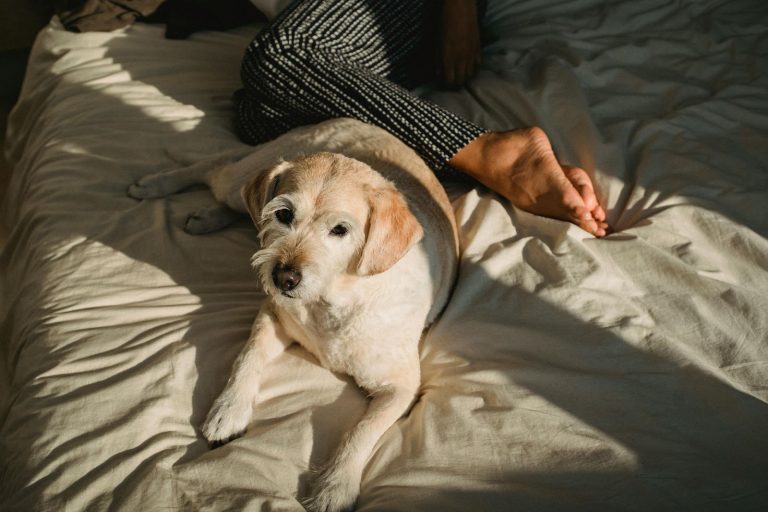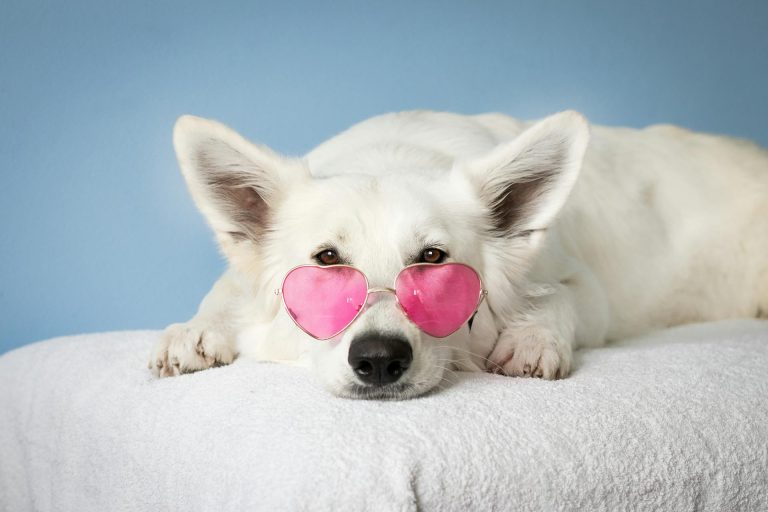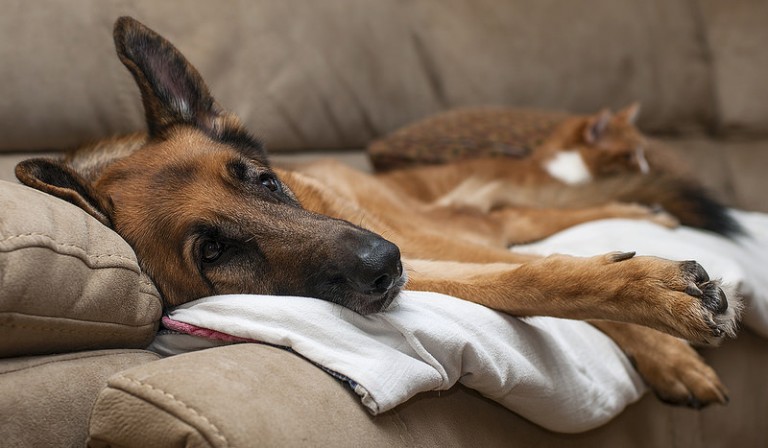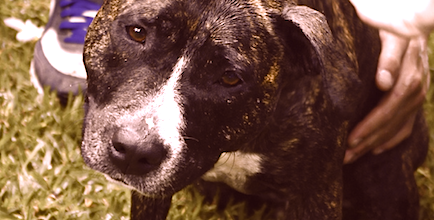The Amazing Story of a Secret Service Dog Trainer
As a young boy in the 1970s, Leth Oun survived the killing fields of Cambodia. Now he protects U.S. presidents as a member of the Secret Service Canine Unit.
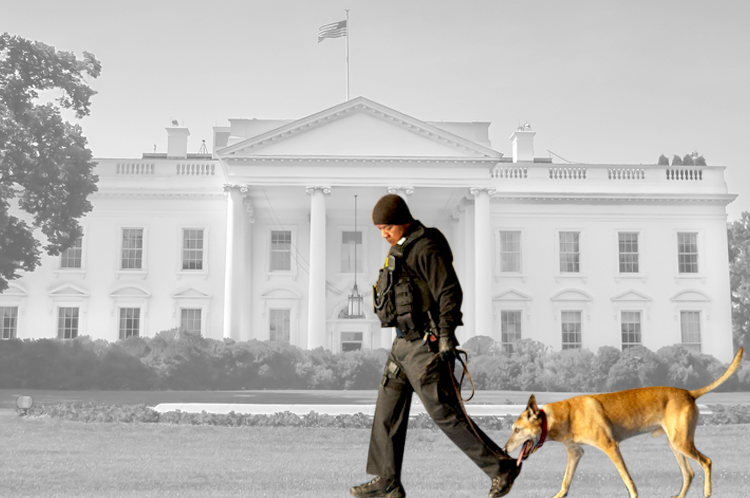
Leth Oun has always been passionate about dogs.
When Oun was a child, a French Bulldog named Dino saved his spirit during the Khmer Rouge regime in Cambodia.
Today, Oun, 52, works at the White House as a member of the Secret Service Canine Unit where, until the dog’s retirement, a Belgian Malinois named Reik saved lives by sniffing out explosives to keep U.S. presidents, vice presidents and other officials safe.
In more ways than one, Leth Oun owes his life to dogs.

Don’t leave your pet’s safety to chance
Sign up for Petful recall alerts today.

A Terrifying Escape
In Cambodia as a child, Oun went to school and played with Dino.
The smart and funny Frenchie had come to live with Oun and his family in Battambang as a puppy. Like any family dog, Dino would be waiting for Oun when he got home from school, wagging his short tail, ready to play.
“Dino was family,” Oun tells Petful. “He was always with me.”
Even at a young age, Oun was a natural dog trainer. “Dino was very obedient,” he says. “I never had to put him on a leash because he always stayed at my side.”
Oun speaks pragmatically, but often in the present tense, about the terrible things he survived as a child in Cambodia after the Communist Party of Kampuchea, commonly known as the Khmer Rouge, wrested control of the country in a violent coup in April 1975.
Oun was 9 when his father, a lieutenant in the army, was taken away with other officers to a school building. “Three days later, I went there to bring him some food, but he was gone.”
He never saw his father again. A few days later, Oun’s life changed forever.
He awoke that morning to the sound of gunfire. In the streets, Khmer Rouge soldiers shot into the air and shouted that everyone had to leave the city or be killed. They had only minutes to pack what they could and go.
Oun recalls the people who didn’t want to leave their belongings behind. “They were shot and killed,” he says. “There was a lot of chaos and a lot of bodies everywhere in the city.”
Oun’s younger sister had been living with their grandmother outside the city where it was safer. As Oun, his mother and his older sister gathered what they needed and what they couldn’t bear to leave behind, the streets filled with smoke as the soldiers torched the homes that people refused to leave.
They got on their bicycles, small packs over their shoulders, and set out with no destination.
Oun had trained his dog well, and Dino happily trotted along at his best friend’s side. “He never left my sight during the forced evacuations,” Oun recalls. “He was with me the entire time.”

Dino One and the Killing Fields
The family had no destination. It was monsoon season and raining hard, and they had to push their bicycles through the mud.
“We kept walking, walking. The Khmer Rouge Army only told us to keep moving,” Oun says. “We walked through the storm in the middle of the night.”
It was terrifying, but having Dino at his side helped keep Oun calm. That night, they slept in the rice field in the pouring rain.
The next day, they reached the home of his father’s cousin, looking for shelter — but they were turned away. Oun’s father was considered the enemy by the Khmer Rouge, which eventually executed an estimated 1.4 million Cambodians in the mid- to late 1970s in what would become known as the killing fields.
Their relatives “didn’t want anything to do with us. If the Khmer Rouge knew, they would kill all of them, and us too,” Oun says.
So the family had to keep moving.
Dino seemed to know when everyone needed to rest. He’d find some shade under a tree, sit down and wait until Oun got everyone to stop.
They walked all day long and slept on the bare ground. At night, Oun huddled with Dino, trying to stay warm, to stay dry, to stay hopeful.
The family had to change their name several times to stay alive. “If your name is long, they can say you are upper class, and they’ll kill you,” Oun says. The only family member who retained his original name was Dino.
Despite the heat and the rain and the smell of death, Dino remained his happy self, trotting alongside his family, wagging this little tail, content with nothing more than being with them.
And while Oun was forced to grow up overnight, Dino was an inspiration he would follow — for the rest of his life, though he didn’t know that then.

The Labor Camp
Pol Pot and the Khmer Rouge leadership devised a Four-Year Plan, from 1977 to 1980, to seize all privately owned property and turn the citizens of Cambodia into farmers cultivating rice.
The entire population had to work in collective farms or forced labor camps. The Khmer Rouge expected to radically increase the average national yield of rice to reach a yield of 3 tons of rice per hectare (about 2.5 acres) throughout the country.
To meet this demand, the Khmer Rouge forced all citizens to labor in the fields for 12 hours a day or more without adequate rest, food or tools.
Oun and his family arrived at a community called Chrouy Sdau, a forced labor camp. They lived in an abandoned rice factory with other families. “There’s no bed,” Oun recalls. “There’s no mattress. There’s no blanket.” They cut down bamboo to make furniture.
Every night, Dino would crawl into bed with young Oun to sleep.
While all the families loved Dino, the Khmer Rouge weren’t exactly what you’d call “dog people.”
“They don’t like animals,” Oun says. “If you own a dog, they think you’re an upper-class family, that you must have money, and they don’t like that at all.”
At 4 or 5 in the morning, they were marched for miles, children and adults, to the rice paddies where they worked all morning until 11 or 12, when they were given a 10-minute break for lunch. They sat on the ground in the burning sun or in the rain, the water soaking their food.
“It’s just rice, and most of the time we eat it with salt. That’s all we have to eat,” Oun says. When the 10 minutes were up, they went back to the rice paddy.
A Heartbreaking Loss
Oun knew he had Dino to go home to — but the happiness that this bouncing Frenchie made him feel had to be kept hidden away.
While he was working, though, Oun could imagine how Dino would run to greet him, wiggling his backside and licking the boy’s face. They would spend some time playing, and Oun could forget that he was in a labor camp, and that his father was presumed murdered.
One night, Dino didn’t greet the boy when he got home. “I can’t find him. It’s dark. We don’t have electricity. There are no flashlights. No kennels,” Oun recalls.
“But I search as much as I can, and when I can’t find him the first night, I don’t have a good feeling about it. I know that the communists don’t like animals. They don’t like dogs, especially,” he says.
It was the first night since he was 5 that he didn’t have Dino to keep him company.
I found him in a pool of blood,” Leth Oun says of his beloved childhood dog, a French Bulldog who was killed by the communists in Cambodia. Burying him “was the toughest thing in my life back then as a 9-year-old boy,” he says.
The next day, Oun asked the other workers if they’d seen his dog. An old man reported seeing Dino run across a nearby train track. Then he told Oun that Dino had been shot by the Khmer Rouge.
“My heart dropped. It sank to the bottom,” Oun says.
Oun slipped away to look for Dino on his lunch break. “I found him in a pool of blood. There were 3 bullet holes in his body,” he says.
The Khmer Rouge had used Dino for target practice.
“My heart broke and I cried, but I couldn’t let them know that I was crying. So I put his body someplace that I could easily find when I came back from work,” he says.
That night, alone in the dark, the young boy buried his dog.
“I picked up his body and found a place where the ground was soft, so I could dig with my hands and bury him,” Oun says. “It was the toughest thing in my life back then as a 9-year-old boy.”
Afterward, he realized he had the dog’s blood on his shirt. He had to find a place to wash it out before the communists saw it. “They did it just for fun. Just for fun,” he says.
Oun was devastated. He would go to Dino’s grave on his break and cry.
“But I could not let them see me crying or I would be punished,” he says. They could take away his food or use his grief to interrogate him.
Fortunately, he lived with kind people who comforted him. They told him that though Dino’s life was short, maybe in the next life Dino would live longer with him. “Every chance I got, I went to see Dino’s grave, just to remind me that his soul is always with me,” Oun says.
Staying Alive
Eventually, Oun was separated from his mother and sent to a child labor camp. They worked 16–18 hours a day.
“There’s no food. Leaves are your mattress. There’s no blankets. At night, you look up at the sky, at all the stars and the moon, and you listen to the crickets and animals singing. We don’t have anything,” he recalls.
The Vietnamese invasion of Cambodia in December 1978 drove out the Khmer Rouge in a matter of weeks.
Oun set out with a friend to find his family, but they had been kidnapped by a group of 5 communist soldiers hiding out in a house.
The kidnappers took Oun upstairs and his friend to the basement, where they accused them of spying for the Vietnamese and interrogated the boys to get them to confess. When a messenger arrived with news that the Vietnamese were on their way, the soldiers let the boys go. Oun had been certain they were going to kill him.
Eventually, Oun and his mother were reunited in a town on the border of Thailand.
When they found themselves in the middle of a battle between fighting factions, they hid in a stand of olive trees on a hill until they were picked up by a squadron of United Nations trucks and taken to the first of several refugee camps.
In 1983, an uncle who had made it to the United States the year before arranged for a church in Maryland to sponsor the family.
The first dog Oun got in America was a German Shepherd. He named him Dino.

The American Dream
In America, Oun devoted himself to learning English. After his early life in the labor camps and then later, in a series of refugee camps, Oun believed in the American Dream.
He wanted to be successful so he could take care of his family. Never again would they have to catch rats or bugs for food or pretend to be illiterate so they wouldn’t be killed.
Oun attended high school, working as a dishwasher in a Chinese restaurant in Silver Spring, Maryland, after school and on weekends. He saved up enough money for a bicycle and rode to work in rain and in snow.
After high school, he worked 3 or more jobs consistently, managing to get an associate’s degree. Finally, he got in to Widener University in Pennsylvania and earned a bachelor’s degree in sociology with a minor in criminal justice.
Oun got a job as a social worker at a program for juvenile delinquents in Philadelphia, where he worked mostly with Asian juveniles in collaboration with their probation officers. “Then I thought, if I could work for the city, why not go for the next step, the federal level?” he recalls.
He put in an application at the federal building in Philadelphia, and a few weeks later he got a call from the Department of Justice’s Federal Bureau of Prisons to come in for an interview.
A few weeks later, an offer letter arrived. Oun had been chosen to become a self-defense instructor and a member of the Bureau of Prisons riot team, which operated in minimum- and maximum-security prisons nationwide.
I am always trying to see how far I can go to achieve my dream, but I never thought I’d be able to join the Secret Service.”
After the 9/11 terrorist attacks, Oun went to a U.S. Army Recruiting Center to volunteer for service. After weeks went by, he called a few friends who work for the Secret Service. “I wanted to see how they were doing with the terrible tragedy in the country,” he says.
He told them he had tried to sign up for the military but hadn’t heard back, and that he felt his age might be a factor.
One of his friends in the Secret Service told him, “We need more people,” Oun recalls.
“My goal had been to join the Army and go to Afghanistan and fight the terrorists, but I was not successful. I decided to serve the country in a different way. I am always trying to see how far I can go to achieve my dream,” Oun explains, “but I never thought I’d be able to join the Secret Service — the top law enforcement agency in the world.”
A native-born Cambodian, Oun had come to America as a political refugee. “I didn’t speak a word of English,” he says. “I didn’t have a penny to my name. I never thought I could be a Secret Service officer protecting the American presidents. Yet here I am.”

Secret Service Dog Trainer
The day Oun was asked by the Secret Service if he loved dogs turned out to be a crossroads in his life.
“I said yes! I love dogs. I’m a dog person,” he says. A position was about to open up on the Canine Unit.
Oun didn’t hesitate. In 2003, a Belgian Malinois named Reik was assigned to him.
“Reik was really skinny when I first met him,” Oun recalls. A picky eater, the dog was around 20 pounds underweight. While Oun was training Reik to become an explosive detection dog, Oun decided to forgo the processed dog food from the agency, which Reik refused to eat.
“I paid money out of my pocket to get him organic food,” Oun says. “You could tell the difference right away.” Reik became enthusiastic about training.
Oun says Reik was bilingual — the dog understood Oun’s commands in English and Cambodian.
Bomb dogs train on scent cans and different scenarios where they will be searching for explosives: cars, vans, packages, luggage. Reik learned the “passive” alert used with explosive detection dogs rather than the aggressive alert of drug detection dogs.
- An aggressive alert dog scratches and paws at the spot where they find the drugs.
- For a passive alert, the dog simply sits down when they find something suspicious — no one wants a dog scratching at something that can blow up.
Reik turned out to be an extremely talented Secret Service dog.
“He and I were a good team,” Oun says. “We actually got a trophy because we didn’t have any false alerts or misses, which means that Reik found every explosive odor they planted.”
A typical workday consisted of conducting sweeps when Reik would sniff out anything explosive. Oun and Reik also would accompany each U.S. president when he was traveling.
It was hard work, Oun says, especially when they traveled to places in the Middle East. “It was hot and humid, and we had a lot of work like sweeping cars. I felt bad for him. I could tell he was tired, but we had a lot more work to do some days.”
On one trip, Reik alerted to an explosive scent he’d found in a bag.
“I had a split second to make decisions,” Oun says. “I grabbed Reik and put him on my shoulder. I informed my team that my dog alerted to the bag, and I ran. I trusted Reik. He had found something.”

“A Real American Hero”
Oun took good care of his Secret Service dog. “That’s why he lived so long,” he says.
“Every birthday, I gave him a pound of beef. And when we went on the road together, the days that he had to work hard, and you could tell that he was tired, that night, he got a 16-ounce steak. He loved that.”
Oun and Reik traveled to many countries together.
In 2012, they went ahead of President Obama to Cambodia for the East Asia Summit. It was the first time a U.S. president had visited Cambodia.
While there, Oun discovered — to his astonishment — that his younger sister was alive. They arranged a meeting. “I thought she would be dead because of our father’s history. But she survived,” Oun says. “It was the first time I saw or heard from her since 1979.”
They met in Phnom Penh and immediately recognized each other.
Oun began sending money to Cambodia to build wells. So far, his donations have built dozens. He also sends money to his sister directly to donate to the elderly and the poor.
He returned to Cambodia in 2015 with Michelle Obama’s Let Girls Learn campaign and met with his younger sister again. By then, Reik had retired and didn’t accompany Oun on the trip.

Upon Reik’s retirement, Oun received a certificate that gave him responsibility for the dog’s care. Reik spent the last 5 years of his life in blissful retirement — a little confused when Oun left for work without him, but it was nothing that a juicy steak couldn’t fix.
The canine hero was pampered. He drank filtered water and ate organic food. He slept on soft beds and went on long walks, cared for during the day by Oun’s mother, who was approaching 100 years old.
Reik’s favorite place to perch was in the master bedroom on a chaise lounge by the window, where he could survey his kingdom.
A few months ago, on the 17th anniversary of the 9/11 attacks, Reik died in his sleep. The former Secret Service dog was just shy of being 17 years old.
The Secret Service posted an announcement at work that K-9 Reik had died, but Oun wishes they had done more. “Honoring Reik is up to me.”
“He was a real American hero,” Oun says. “This is a dog that saves lives. This is a dog that saves airplanes.”

Reik died a month after Oun’s mother died, and Oun isn’t ready for another dog yet. “It’s too new,” he says. “I still have him in my head all the time. It’s tough, so tough. We were together for so long.”
He keeps a picture of this special dog with him that he can look at when he’s alone, sitting on post.
“I still miss him,” Oun says.
“I miss him every time I come home and don’t hear him running to the door. I don’t have him fighting with me to stay on the sofa. I still miss him, even though he’s always in my heart. I see him there every day.”

